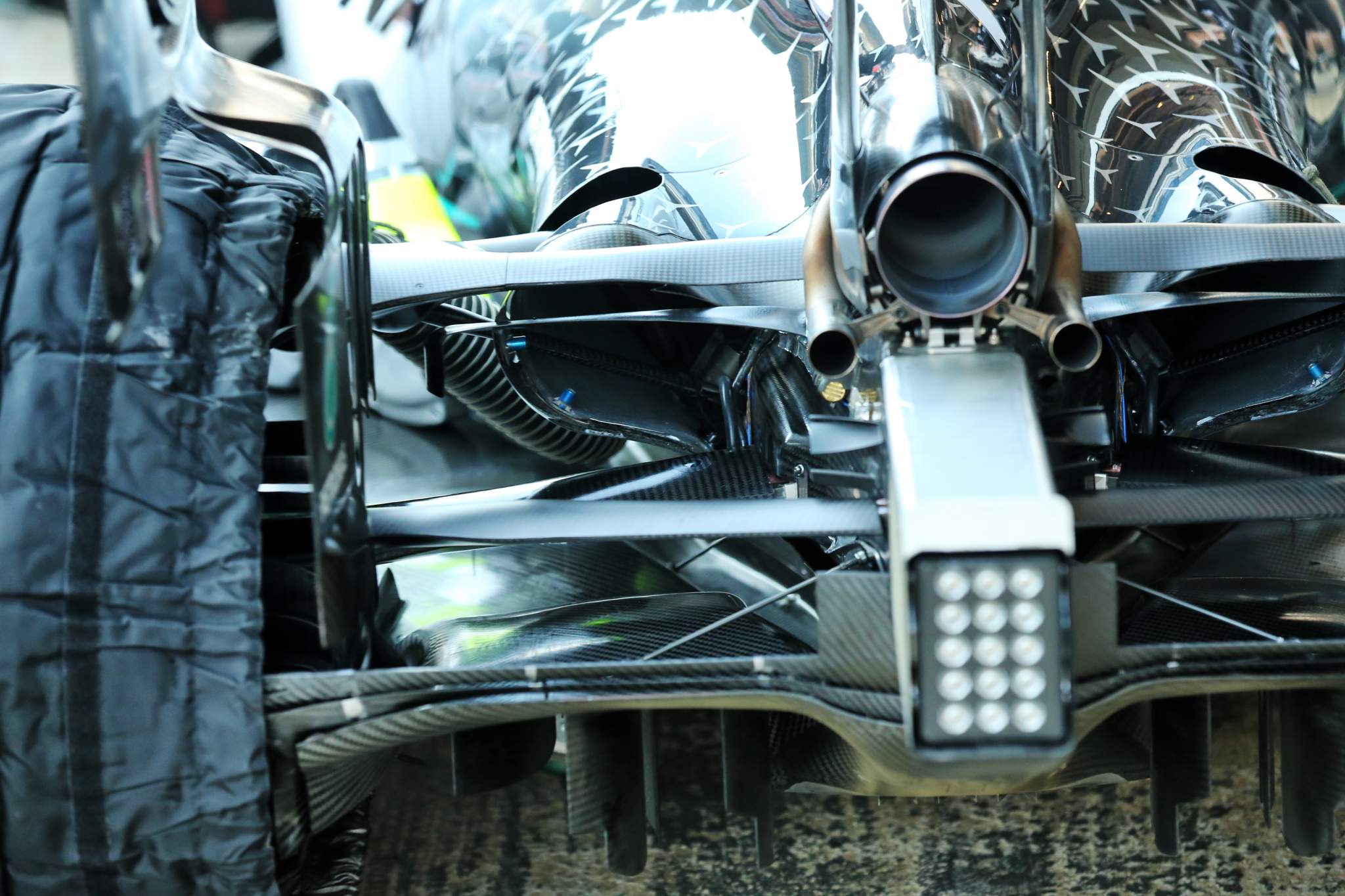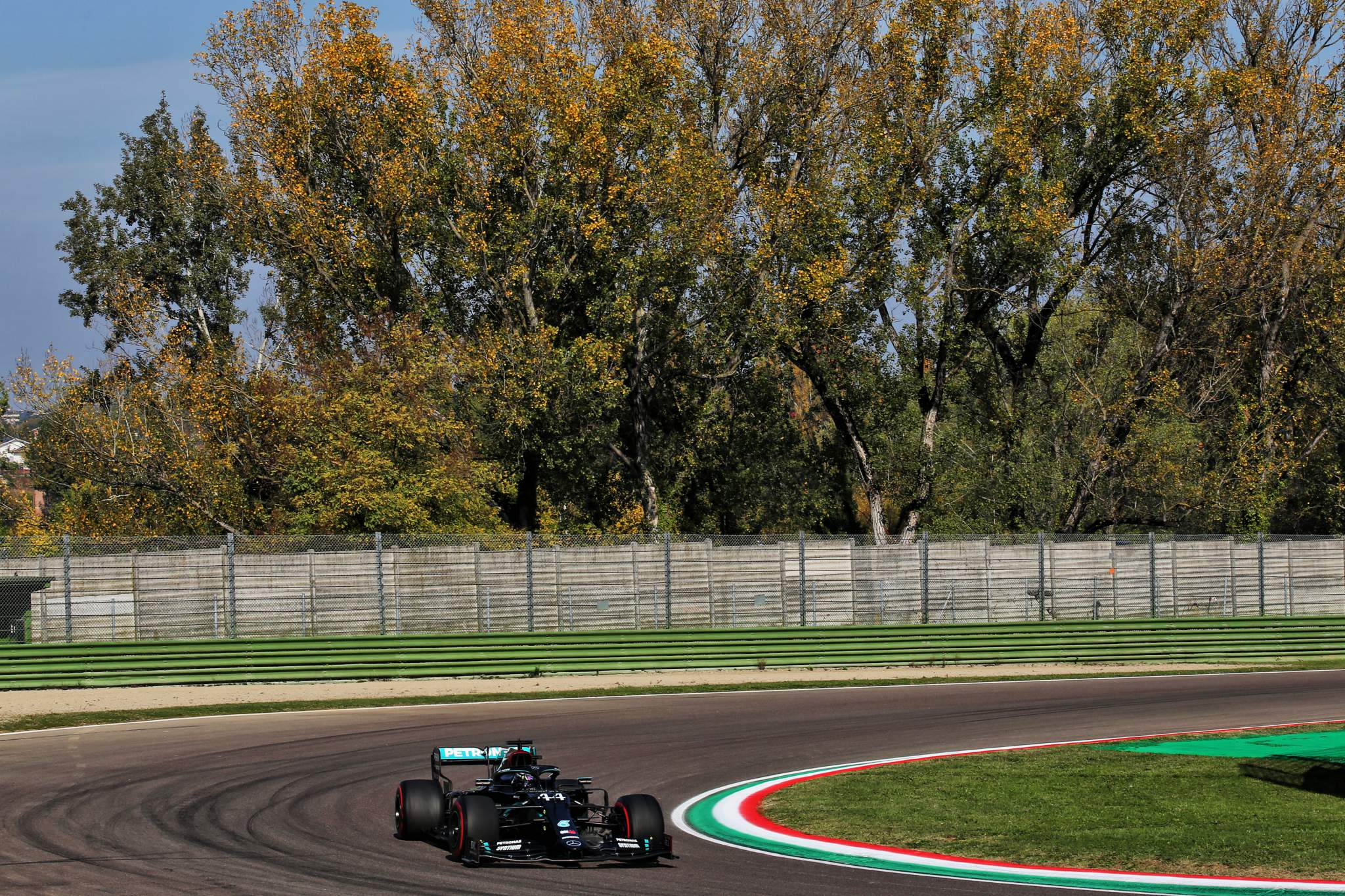Up Next

When great sporting entities, be it individuals or the groups of individuals that make up a Formula 1 team, are put under pressure, they show their steel.
Mercedes was under pressure from Ferrari in 2018 and ’19, with the unintended consequence for its rivals that it dug deeper, found ways to improve what to the outside world resembled perfection and raise the bar again.
“I’m not going to say how much it was worth aerodynamically, but enough for us to still be trying crash tests right at the 11th hour” :: James Allison
The Mercedes W11 might have looked similar to its predecessors at a glance, but it was the product of pulling out all of the stops. When the car first appeared, the re-engineering of the rear suspension was obvious, as was the tightened packaging around the rear of the car.
The team spoke of an engine set-up that could run hotter and that delivered more performance, while the second day of pre-season testing revealed a new trick in the dual-axis steering system. This was not a team that was resting on its laurels for even a millisecond.
And beyond those changes, there were also dynamic gains, particularly with unlocking what Lewis Hamilton had been calling for by making the car rotate more quickly at corner entry – requiring both a responsive front end and a rear that could follow it. That played a significant part in improving the car in qualifying trim – although the series of power unit technical directives that were the consequence of FIA suspicions about the way Ferrari was running its engine also played a part in that.
“We were aiming to have a car that was a bit more well-balanced between qualifying and race,” says technical director James Allison. “The 2019 car was a tremendously good race car, but it was a bit harder to put it on pole.
“Now, there’s reasons why it was a bit harder to put things on pole in that particular season but nevertheless, just talking about how we felt about our car in isolation, it was hard to get the front end sharp enough on single-lap stuff.

“It was pretty useful [on corner-entry rotation] right from the beginning in my recollection of it and clearly we’ve made it better as the year has gone on. But it was pretty quick in winter testing and we’d made a good step forward by the time we first raced it as well.”
The Mercedes was the fastest car on 16 of the 17 weekends, with the only exception being the Abu Dhabi finale. Even in Turkey, where cool, damp conditions in qualifying and the need for seven laps to build tyre temperature left Hamilton sixth on the grid, once in the window on a race stint the Mercedes W11 was the fastest.
That was just reward for the amount of the detail work done. Taking the rear suspension as an example, it’s a wonderful piece of engineering that delivered a clear advantage. This effectively flipped the lower wishbone, with the rearward one further back and the forward one in line with the driveshaft.
“I’m not going to say how much it was worth aerodynamically, but enough for us to still be trying crash tests right at the 11th hour,” says Allison.
“Putting the wishbone where we put it means the aft-most suspension element is on the crash structure. That means that you have to have done all the stopping on the crash structure before you hit the hard point of that suspension leg, because that would definitely trigger you above the peak g, which means you have less space to stop it, which means the crash has to be pretty much perfect.
“It has to jump very quickly to the peak g that the test permits and then it has to skirt along just below the peak g for the full length of the travel – so it’s like an almost perfect deceleration in order to fit in the space.
“For a number of tests, we were either not quite getting high enough up on the deceleration so that it travelled and spiked up too much at the end or we’d just go above the peak g for a few milliseconds too much and fail on that basis. It was worth enough that we were willing to do stuff that was structurally difficult.
“The crash test was only part of the structural difficulty. The wishbone legs go into the gearbox in places where the gearbox is not naturally strong, so the box structure needed to beefed up quite a lot in order to cope with the sub-optimal pick-up point locations and to make sure we got at the far side of it a nice driving characteristic that matched up with the behaviours we’ve had in the past.”

Inevitably, everything comes at a cost and there was a risk attached to doing this. Aiming to retain the same behaviour through such a significant change is, as Allison puts it, a “brave game”.
“With this particular change, we knew exhaustively what our prior levels of stiffness were like and how the suspension behaved, so we had a good baseline,” said Allison.
“But by swapping effectively the trackrod from one part of the rim to the other part of the rim, you end up changing the way in which the rear tyre toes, steers under load.
“The old car had a toeing effect under load that was mildly destabilising. Not by design or intention, it’s just that layout causes a change in toe angle at the rear that tends to the more you load it the more it wants to steer.

“Changing it the other way round is mildly stabilising. We just needed to make sure that in going from a slightly destabilising thing – which for better or worse was the car we knew – that changing it to one that was just the other side of zero and stabilising, that was not going to make the car into a turkey.
“So calculating in stress very carefully that the change was small, then simulating in the lap simulation and then confirming it in driver-in-loop to make sure that we’d not done anything to change the handling of the car in an unpleasant fashion.
“Happily, when we got the car out on the track, both drivers were very confident in the rear end very quickly. I remember the predominant feeling I had in Silverstone when we shook the car down was are they going get out the car and say ‘it feels weird’ because we know we’d changed something and we know we changed from this.
“And seeing Valtteri [Bottas] go flat through Turn 1 [Abbey] at Silverstone pretty much from his first lap on what was not exactly a bone dry track made me think well, it’s probably alright then.”
With the rear suspension working well and DAS, which caused a stir on the second day of pre-season testing, proving to be an effective tool for front tyre warm-up even if it did have a little untapped potential, the power unit step and resulting cooling/packaging advantages also paid off.
Mercedes emphatically re-established itself as the pick of the litter when it came to engines, even when the ban on using different power modes for qualifying and the race came in at the Italian Grand Prix.
It was essentially the same package design wise, but with more power and the advantage of being able to run a little warmer. This was another example of how Mercedes in all areas is capable of extracting more performance at a point where rivals are hoping it is already pushing against the ceiling of what’s possible.
The season wasn’t without its troubles. In the Austrian Grand Prix both drivers were ordered to stay off the kerbs, with a sensor problem that originated with an increase in the ‘whip’ of the input shaft that led to it moving around more where it connects to the gearbox.
At the 70th Anniversary Grand Prix, rear tyre blistering handed victory to Red Bull and Max Verstappen a week after Hamilton had completed most of the final lap of the British GP after a tyre failure – although that was a wider Pirelli problem. Later in the year, at Istanbul Park, the Mercedes drivers qualified poorly with Hamilton sixth and Bottas ninth but, once they’d had the seven laps required to build tyre temperature, the car was fastest in the race.
“We just didn’t do a good job in the second Silverstone,” admits Allison. “We romped through the first one and it was not problematic at all and we went to the second one a week later too complacently. It’s not that we didn’t pay the amount of attention, it’s just that we didn’t pay the amount of attention that it deserved.
“We just thought that we did the first one fine and yeah sure the tyres were a step softer but the car would be fine. But when we looked at it afterwards, it was pretty evident that all the normal precautions we would have taken at a high-energy track with soft tyres that were softer than we would have ideally wanted for that track.
“We would normally have gone into such a race with our antenna really alert to the sort of problems that can emerge and we’d have adjusted the set up a long way away from where we ended up running in Silverstone 2. Whereas we just started with Silverstone 1-type set ups and expected the same magic to happen. That was just a stupid own goal that we all felt foolish about afterwards.”
But perhaps the most worrying thing for the opposition was the fact that Mercedes deployed its final upgrade for the seventh race of the season at Spa with all of its attention now on the tweaks to the aero rules for 2021. Red Bull, meanwhile, had to press on and did beat Mercedes on merit in the last race in Abu Dhabi, plenty of unseen work will have been invested into next year while that gap was closing.
Overall, it was the same old, astonishing story for Mercedes. Yes, it has the resources to be at the front but it also uses them brilliantly with an exemplary culture and the refusal to sit back and assume that just because it’s at the front today, it will automatically be there tomorrow.
With seven consecutive double championships, this is now the most astonishing period of dominance in grand prix history. It might seem predictable, but it should absolutely be recognised and celebrated.







